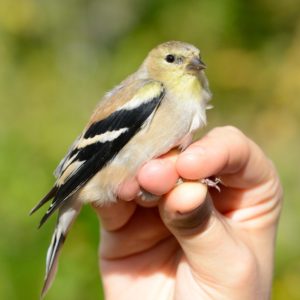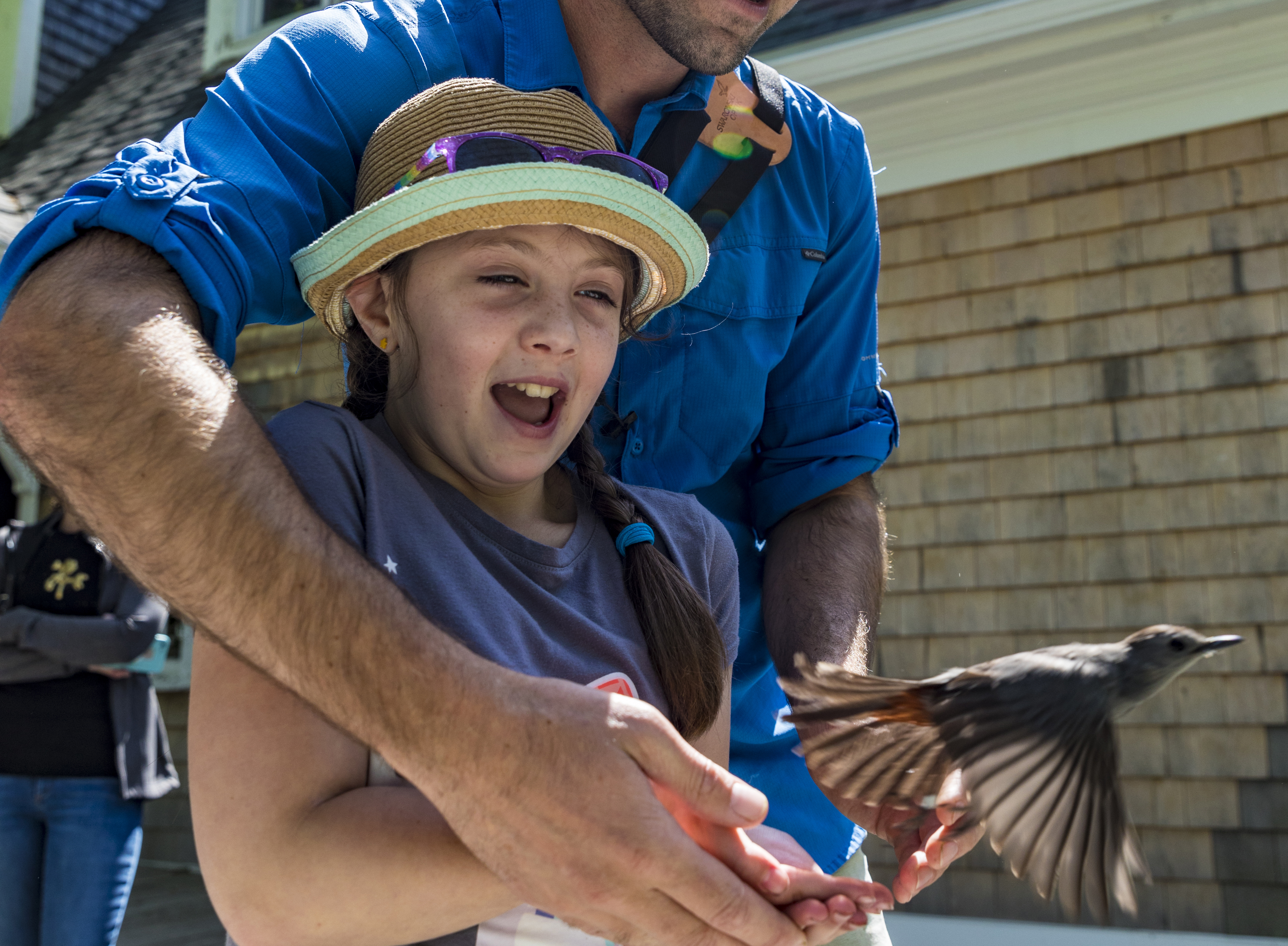We finished our penultimate week of banding with 106 new birds banded, 41 recaptures processed, and two new species for the fall season. With just one week left in the banding season our totals stand at 1,525 new birds banded, 837 recaptures processed, and 72 total species caught. We saw flocks of Pine Siskins and a few Common Redpolls feeding on goldenrods on the Holmes Farm over the weekend. These species are part of the winter finch irruption and are not often seen at Manomet.
Monday and Tuesday were cold and windy. Strong winds from the west and low temperatures meant that most of our nets were closed both days and we processed only a handful of birds. Things improved on Wednesday and though it was chilly early, it warmed up quickly. All the nets were open and we caught our first Winter Wren of the season. Although these birds are small, their song is incredibly loud. They’re often seen singing with their small bodies shaking with the effort of expelling their song. Late in the afternoon, after we had finished closing for the day, two White-tailed Deer sauntered casually across the upper parking lot towards Manomet’s Garden for Wildlife. After looking between the banders and the garden they decided we weren’t a threat and began foraging.
On Thursday the warm temperatures and sun brought out some Eastern Garter Snakes. We haven’t seen snakes in several weeks since temperatures were much colder. A slight rustle in the leaves outside the banding lab attracted our attention; there was a snake right in the leaf litter, tongue flicking and testing the air. After we watched it quietly for a few moments it slithered away. We caught 13 Black-capped Chickadees on Thursday and several Northern Cardinals. These birds are almost all coming out of the bluff nets that are placed right along the coast. Chickadees are diurnal migrants (a species that migrates during the daytime) and will follow the coastline as they disperse. We’ve been catching consistent numbers of chickadees and this may be linked to the poor food sources up north, causing more birds to disperse south than usual.





 Back to all
Back to all


